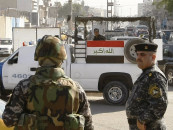Archeological site: 6th century mound in Bannu now a sprawling village
It was declared a heritage site in 1949.

The federal government has listed over 90 heritage sites across the province as ‘protected’, but the provincial government has so far only listed one: Megaliths of Asota in Swabi. DESIGN: MUHAMMAD SUHAIB
The Akra mound in southern Bannu, which dates back to 6th century BC during Achamenid rule, has turned into a sprawling village over the years.
The mound, spread over 320 kanals, was declared a heritage archeological site by the government in 1949, according to an official of the provincial directorate of archeology.
He said the land is owned by the government, but has been encroached and turned into a village over time. “A big chunk of the mound is gone as locals chipped it away to make space for the construction of houses. Now, a whole village has sprung up around it.”
He added that the site has been impinged to make way for the provision of amenities like electricity and other developments.
The Akra mound is divided in two parts: Akra-A and Akra-B. Akra-A is situated about 14 kilometres southwest of Bannu, while Akra-B is another kilometer further south of it.
The mounds are two of the four places declared archeological sites in Bannu. The other two, Sheikhan Dheri in Charsadda and Megaliths of Asota in Swabi, also date back to the Achamenid rule.
The official said Akra-B has also been converted into a graveyard by the locals.

Archeology Department’s Director Dr Shah Nazar, however, insists the site is still intact.
“We have written about it to the commissioner of Bannu and are working on revenue records to ensure work for the proper demarcation of the site,” said Nazar.
According to him, the Akra mound is bisected by a flood drain. The land falling on its western side is the property of locals, while land east of the drain is in the custody of the government.
Nazar added that officials from the federal Archeology Department tried putting up a fence around it two years back, but the locals took it down. “We have placed Akra on the priority list. It is among the 12 projects and will be protected from illegal activity.”
The provincial directorate official, however, blamed the federal Archaeology Department for not paying due attention to the site. He maintained the department only recently added the site to the list and was not ensuring its preservation.
He feared other sites would meet the same fate if no action is taken.
The federal government has listed over 90 heritage sites across the province as ‘protected’, but the provincial government has so far only listed one: Megaliths of Asota in Swabi.
The sites were recently transferred to the provincial government when the Archeology Department was devolved to the provinces under the 18th Amendment.
A report prepared by the department lists at least 34 of 91 protected sites across the province as damaged, encroached or untraceable. However, no action has been taken by the concerned authorities as yet.
Such sites include Sheikhan Dheri in Charsadda which is spread over 86 kanals. The archaeological location, excavated in 1964, cannot be measured now due to the damage caused to it. Another site is Dharam Sal ki Dheri, which was first noticed by a Chinese traveler in the 7th century, also remains in a very small portion.
Adina, located in Swabi has been reduced to seven kanals out of its original 16 kanals and five marlas. Notified in 1938, the site has been subject to illegal grave digging since years.
Nineteen kanals of Chichar Dheri in Mardan , notified in 1938 have also been badly damaged by locals. Hunnual Dheri, another ‘protected site’, has no details available about the extent of damage but is among the list of damaged, encroached and untraceable archaeological sites.
Published in The Express Tribune, December 26th, 2012.



















COMMENTS
Comments are moderated and generally will be posted if they are on-topic and not abusive.
For more information, please see our Comments FAQ